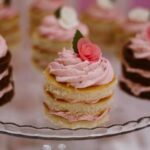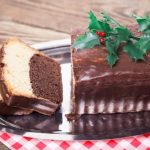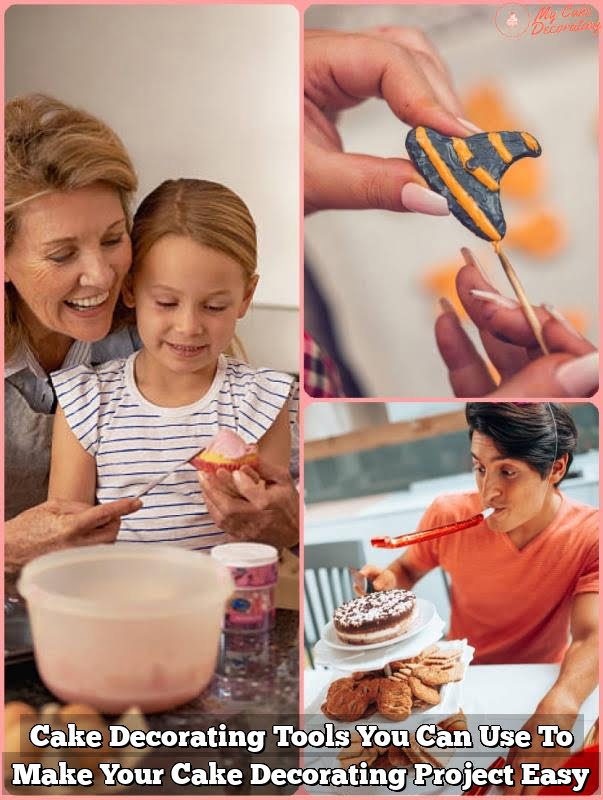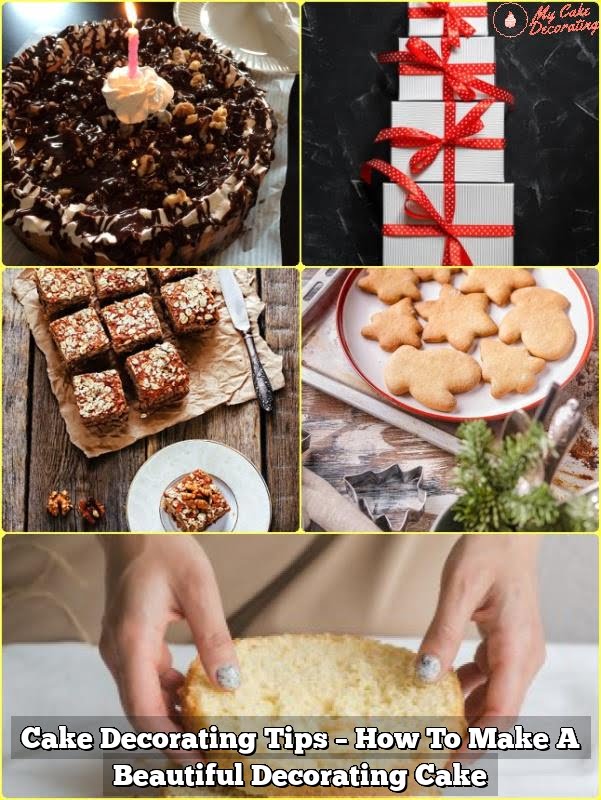Cake decorating is an art that allows bakers to express their creativity and add a personal touch to their creations. One essential tool in this creative process is the stencil, which can elevate a cake design from ordinary to extraordinary. With stencils, bakers can achieve intricate and professional-looking patterns and motifs on their cakes with ease.
Creating your own stencil for cake decorating opens up endless possibilities for customization and personalization. Instead of relying on pre-made stencils, making your own allows you to tailor the design specifically to your cake creation. Whether it’s a birthday cake or a wedding masterpiece, a custom stencil adds a unique and special touch.
To embark on your journey of creating stunning stencil designs for cake decorating, you’ll need some basic tools and materials. These include lightweight plastic sheeting or transparency paper, an X-Acto knife or craft knife, cutting mat or board, pencil or pen for tracing the design, and sturdy adhesive tape. Once you have gathered these supplies, you are ready to dive into the world of DIY stencil making.
In this article, we will guide you through the step-by-step process of creating your own stencil design for cake decorating. From choosing the right tools to troubleshooting common issues, we will cover everything you need to know.
We will also explore different techniques for using stencils in cake decorating and provide advanced stencil design ideas for those looking to take their skills to the next level. So let’s get started on this exciting journey of unleashing your creativity and adding that extra wow factor to your cakes with DIY stenciling.
Understanding the Benefits of Making Your Own Cake Decoration Stencils
Making your own cake decoration stencils can provide many benefits for your cake decorating endeavors. Here are some key advantages to consider:
- Cost-effective: Creating your own stencils allows you to save money compared to purchasing pre-made stencils. With just a few simple materials, you can make multiple stencils that suit your specific cake decorating needs.
- Customization: DIY stencils give you the freedom to create unique designs that perfectly match your cake theme or personal style. Whether you’re looking to add intricate patterns, monograms, or specific shapes, making your own stencils allows for endless customization possibilities.
- Flexibility: When you make your own stencils, you have full control over the size and shape of the design. This means you can easily adjust the stencil dimensions to fit different cake sizes or specific areas on a cake that require decoration.
To start making your own cake decoration stencils, there are a few essential tools and materials that you will need:
- Transparent sheets: Opt for food-safe transparent sheets or acetate paper that can withstand contact with edible ingredients.
- Cutting tool: A sharp craft knife or precision cutter is essential for cutting out intricate designs on the stencil material.
- Design templates: Having design templates on hand will help guide you in creating precise and symmetrical motifs for your stencils. You can find free templates online or create your own using design software.
- Adhesive spray or tape: To ensure that the stencil stays in place while decorating, use adhesive spray or tape to secure it onto the cake surface without damaging the icing.
By understanding the benefits of making your own stencil designs and gathering the necessary tools and materials, you are ready to move on to the step-by-step guide for creating personalized cake decoration stencils.
Gathering the Necessary Tools and Materials for DIY Stencil Making
To create your own cake decoration stencils, you will need a few tools and materials. Gathering these supplies beforehand will ensure that you have everything you need to start making beautiful designs for your cakes. Here are the necessary tools and materials for DIY stencil making:
- Stencil material: There are various options when it comes to stencil material. One popular choice is food-safe plastic sheets or acetate, which can be easily cut and cleaned. You can also use thick paper or cardboard, although these may not be as durable.
- Cutting tool: A sharp craft knife or utility knife is essential for cutting out intricate designs on your stencil material. Make sure the blade is sharp to achieve clean cuts.
- Pencil and eraser: These basic drawing tools will help you sketch and refine your stencil design before transferring it onto the stencil material.
- Ruler or straight edge: When creating geometric or symmetrical designs, a ruler or straight edge will help ensure precise measurements and straight lines.
- Tape: Adhesive tape such as masking tape or painter’s tape can be used to secure your stencil design onto the cake surface during application.
- Paintbrushes: Small paintbrushes with fine bristles are handy for applying icing or edible paint onto the stencil. Choose brushes that allow for controlled and precise painting.
| Tool/Material | Description |
|---|---|
| Stencil material | Food-safe plastic sheets, acetate, thick paper, cardboard |
| Cutting tool | Sharp craft knife or utility knife |
| Pencil and eraser | For sketching and refining design |
| Ruler or straight edge | For precise measurements and lines |
| Tape | Masking tape, painter’s tape for securing stencil |
| Paintbrushes | Small brushes with fine bristles for painting |
Having these tools and materials readily available will make the process of creating your own cake decoration stencils much smoother. It is important to choose food-safe materials that are easy to work with and can be cleaned properly. Additionally, keeping your cutting tool sharp will ensure precise cuts and clean designs. So gather your supplies and get ready to unleash your creativity in the next step of making your own stencil design.
Step-by-Step Guide
Creating your own stencil design for cake decorating allows you to add a personal touch and bring your creative vision to life. Follow this step-by-step guide to make your own unique stencils that will impress everyone who sees your cakes.
- Choose the Design: Start by selecting a design for your stencil. It can be as simple or intricate as you like, depending on your skill level and desired outcome. Consider using a theme or pattern that matches the occasion or the overall aesthetic of the cake.
- Gather Materials: To create your stencil, you will need some essential materials. These include stencil film or acetate sheets, an X-Acto knife or craft knife with a sharp blade, a cutting mat, masking tape, and a pencil or marker for tracing the design onto the film.
- Trace and Cut: Once you have chosen your design, place the stencil film on top of it and secure it in place with masking tape. Trace the outline of your design onto the film using a pencil or marker. Be sure to trace all intricate details accurately.
- Test and Refine: After cutting out your stencil design, test it by placing it on a piece of paper and applying some powdered sugar or cocoa powder through the openings. This will help you determine if there are any areas that need refinement or adjustment.
Next, carefully use an X-Acto knife or craft knife to cut out the traced design on the stencil film. Take your time and use smooth, controlled movements to ensure clean cuts without any jagged edges.
If you find any imperfections or areas where powdered sugar leaks through where it shouldn’t, go back and make necessary corrections by trimming off excess parts with the X-Acto knife until the result is crisp and clean.
Remember that practice makes perfect when creating stencils for cake decorating. Don’t hesitate to experiment with different designs and techniques until you achieve the desired results.
Tips and Tricks for Successfully Transferring the Stencil Onto the Cake Surface
When it comes to cake decorating, successfully transferring the stencil onto the cake surface is a crucial step in achieving a professional and polished finish. Here are some tips and tricks to help you master this process:
- Prepare Your Cake Surface: Before applying the stencil, make sure that your cake surface is smooth and level. This will ensure even contact between the stencil and the cake, resulting in a clean transfer. You can achieve a smooth surface by trimming any uneven edges or using a crumb coat for better adhesion.
- Choose the Right Method: There are several methods you can use to transfer the stencil onto the cake surface. One common method is by dusting powdered sugar or cocoa powder over the stencil using a small sifter or sieve. Alternatively, you can use food color spray or an airbrush for more intricate designs.
- Secure the Stencil: To prevent any movement or smudging during application, it’s important to secure the stencil firmly onto the cake surface. You can use tape, toothpicks, or even buttercream frosting to hold it in place. Just be careful not to damage your design or disturb any delicate decorations.
- Apply with Even Pressure: When applying powdered sugar or cocoa powder through the stencil, use even pressure and gentle taps with your sifter or sieve. This will help create a smooth and defined design without dislodging the stencil from its position.
- Remove Carefully: Once you’ve transferred your design onto the cake surface, remove the stencil slowly and carefully to avoid smudging or smearing any part of your work. Peel it off at an angle rather than lifting straight up to minimize any potential mishaps.
These tips and tricks will help you successfully transfer your stencils onto your cake surface for a stunning result every time. Practice makes perfect, so don’t be discouraged if it takes a few tries to get it right. With time and patience, you’ll be able to create beautifully decorated cakes that are sure to impress.
| Tips and Tricks for Successfully Transferring the Stencil Onto the Cake Surface |
|---|
| Prepare Your Cake Surface: Before applying the stencil, make sure that your cake surface is smooth and level. |
| Choose the Right Method: There are several methods you can use to transfer the stencil onto the cake surface. |
| Secure the Stencil: To prevent any movement or smudging during application, it’s important to secure the stencil firmly onto the cake surface. |
Exploring Different Techniques for Using Stencils in Cake Decorating
When it comes to using stencils in cake decorating, the possibilities are endless. Stencils can be used in a variety of ways to create beautiful and unique designs on your cakes. Here are some different techniques you can try:
Airbrushing
One popular technique for using stencils is airbrushing. This involves using an airbrush tool to spray food coloring onto the stencil, creating a clean and precise design on the cake. To use this technique, simply secure the stencil onto the cake and hold the airbrush tool about 6-8 inches away from the surface. Move the airbrush in a smooth motion across the stencil, being careful not to overspray.
Dusting
Dusting is another technique that can be used with stencils to add color and texture to your cakes. To do this, place the stencil onto the cake and gently brush edible dust or powdered food coloring over it using a soft brush or sponge. Tap off any excess dust before removing the stencil to reveal your design.
Royal icing
Stenciling with royal icing involves spreading a thin layer of royal icing over the stencil onto the cake surface. Once applied, carefully remove the stencil and allow the icing to dry completely before continuing with any additional decorating techniques.
It’s important to note that different techniques may require different types of stencils. For example, if you plan on airbrushing, look for stencils made from a flexible material like mylar or plastic that can conform to curved surfaces without distorting the design.
In addition to these techniques, don’t be afraid to experiment and combine different methods for even more stunning results. Stencil borders can be used along with other decorative elements such as fondant accents or piping designs for added dimension and detail.
By exploring different techniques for using stencils in cake decorating, you can truly unlock your creativity and take your designs to the next level. So go ahead and give these techniques a try, and let your imagination run wild as you create beautiful and personalized cakes that are sure to impress.
Advanced Stencil Design Ideas
Once you have mastered the basics of creating stencils for cake decorating, it’s time to explore advanced stencil design ideas that will take your skills to the next level. These advanced techniques not only allow you to create more intricate and detailed designs, but also provide endless possibilities for personalization and creativity in your cake decorations.
Mixing Multiple Stencil Designs
One way to elevate your cake decorating game is by combining multiple stencil designs in a single cake decoration. This technique allows you to create visually stunning and complex patterns that are sure to impress. Start by selecting two or more stencil designs that complement each other in terms of theme or style.
Carefully position the first stencil on the cake surface and secure it in place. Once you have applied the first design, carefully remove it and position the second stencil over the first pattern, making sure it aligns properly. Repeat this process with additional stencils until you achieve your desired design.
Adding Dimension with Royal Icing
Another advanced technique is adding dimension to your stenciled designs using royal icing. After applying the initial layer of icing onto your cake, allow it to partially set before placing the stencil on top. Instead of using an icing scraper or spatula, use a piping bag fitted with a small round tip to pipe royal icing over the stencil openings.
This will create raised sections on the surface of your cake, adding depth and texture to your design. Once the icing has set completely, carefully remove the stencil to reveal a beautifully textured pattern.
Incorporating Edible Paints and Airbrushing
For those looking for even more versatility in their stencil designs, incorporating edible paints or airbrushing is a great option. Edible paints can add vibrant colors and intricate details that are difficult to achieve with icing alone. Using a fine brush, carefully apply the edible paints to your stencil design, making sure to stay within the lines of the openings.
Alternatively, you can use an airbrush kit to spray food-safe colors onto the stencil openings, creating a smooth and even finish. Remember to practice on a separate surface before applying the paints or airbrushing directly onto your cake to ensure precision and control.
By exploring these advanced stencil design ideas, you can elevate your cake decorating skills to new heights. Don’t be afraid to experiment and mix different techniques together to create unique and stunning cake decorations that truly reflect your personal style and creativity. With practice and patience, you’ll be able to create breathtaking designs that will leave everyone in awe of your cake decorating talents.
Troubleshooting Common Issues and Mistakes in Stencil Making and Application
One of the most important aspects of making your own stencil for cake decorating is troubleshooting common issues and mistakes that may arise during the process. While creating your own stencil design can be a fun and rewarding experience, it’s not uncommon to encounter some challenges along the way. In this section, we will explore some common issues and mistakes that can occur in stencil making and application, as well as provide tips on how to overcome them.
One common issue that individuals may face when making their own stencils is cutting too deeply or too shallowly into the material. This can result in a stencil that is either difficult to use or does not produce clean, sharp designs on the cake surface.
To avoid this, it’s important to take your time when cutting the stencil and practice with scrap materials before working on your final design. Start with light pressure and gradually increase it as needed until you achieve the desired depth of cut.
Another mistake that often occurs in stencil making is choosing the wrong type of material. It’s crucial to select a material that is sturdy enough to hold its shape during use but also flexible enough to conform to different cake surfaces. Cardstock or acetate are commonly used materials for stencils due to their durability and flexibility. Additionally, consider the intricacy of your design when selecting a material; more delicate designs may require thinner materials such as tracing paper.
When it comes to applying the stencil onto the cake surface, one common mistake is not securing the stencil properly, which can result in smudged or distorted designs. To avoid this issue, make sure your cake is properly prepared and completely cooled before applying the stencil.
Use small dabs of buttercream or royal icing at strategic points on the back of the stencil to secure it firmly in place without damaging the cake surface. Take extra care when removing the stencil after applying any decorative elements using edible spray paint or dusts; an uneven application can ruin all your hard work.
By being aware of these common issues and mistakes in stencil making and application, you can better navigate the process and achieve stunning results with your cake decorating. Remember, practice makes perfect, so don’t get discouraged if you encounter some challenges along the way. With time and patience, you’ll be able to troubleshoot any issues that arise and create beautiful, personalized designs for your cakes.
Final Thoughts
In conclusion, making your own stencil for cake decorating allows you to unleash your creativity and personalize your cakes in unique and beautiful ways. By understanding the benefits of DIY stencil making, gathering the necessary tools and materials, and following a step-by-step guide, you can create stunning designs that will impress your friends, family, and clients.
One of the biggest advantages of making your own cake decoration stencils is the ability to customize them to fit any theme or occasion. Whether you’re creating a birthday cake, a wedding cake, or a special holiday dessert, DIY stenciling provides you with endless design possibilities. You can choose from a wide range of shapes, patterns, and motifs that reflect your personal style and taste.
Furthermore, using stencils in cake decorating allows for precision and consistency in your designs. The clean lines and intricate details achieved through stenciling create professional-looking results that are sure to impress. With practice and experimentation, you can develop various techniques for achieving different effects with your stencils, such as shading or layering colors.
Frequently Asked Questions
Can I make my own cake stencil?
Yes, it is possible to make your own cake stencil. All you need is a piece of sturdy material such as plastic or cardboard that can be easily cut into the desired shape. Start by drawing or printing out the design you want to use as a stencil. Then, place the drawing on top of the material and trace around it with a pencil or marker. Carefully cut out the traced design using scissors or a craft knife.
Ensure that the edges are smooth and even. Once your homemade stencil is ready, gently place it on top of your cake and secure it with tape if necessary. Use a sifter or sieve to sprinkle powdered sugar, cocoa powder, or another type of edible decoration over the stencil onto the cake surface. Alternatively, you can also use food coloring spray by holding it a few inches away from the stencil and spraying evenly.
How do you make a homemade stencil?
Making a homemade stencil is relatively simple and does not require many materials. You will need a thin sheet of plastic, cardstock paper, or acetate film for creating your stencil template. First, determine what shape or design you would like to create and draw it out on your chosen material using a pencil or pen.
Then, carefully cut out the design using scissors or an X-Acto knife while ensuring clean lines and smooth edges. If precision is important for your project, you can also use tracing paper to copy a pre-existing design onto your stencil material before cutting it out. Remember to handle sharp objects with caution and always keep safety in mind when making homemade stencils.
What is the best way to make your own stencils?
When it comes to making your own stencils, there are several methods you can explore depending on your preferences and available materials. One popular way is to use adhesive vinyl sheets commonly used in crafts like scrapbooking or decorative labels. Simply draw or print out the image or text you want on the vinyl sheet’s backing paper and then carefully cut along the lines using a craft knife or cutting machine. Another option is to use freezer paper, which has a shiny side that can be ironed onto fabric or other surfaces. Draw or print your design onto the dull side of the freezer paper and then cut it out with precision using scissors or a craft knife.
The freezer paper stencil can then be positioned on your desired surface and adhered using a hot iron. Additionally, you can explore using specialized stencil materials such as Mylar sheets, which are known for their durability and ability to create intricate designs. These sheets can be hand-cut or easily laser-cut if you have access to appropriate equipment. Whichever method you choose, always ensure that your stencil material is clean, flat, and properly secured before applying paint or other mediums through the stencil.

Welcome to my blog about home and family. This blog is a place where I will share my thoughts, ideas, and experiences related to these important topics. I am a stay-at-home mom with two young children. I hope you enjoy reading it! and may find some helpful tips and ideas that will make your home and family life even better!





